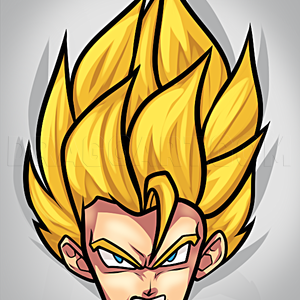1
There are different popular breeds of sheepdogs, and their fur coats vary in thickness and style. Some have so much hair that it covers their entire face in a large poof. Some have long, mop-like locks of fur. Some people clip their dog's fur short.
2
We'll be drawing a traditional English Sheepdog. Here is an example of their skull and how their fur grows out of their head. The fur starts between the eyes and is brush back from there. The hair below the chin dangles down loosely.
3
Puppies have lots of extra fur too, but not nearly as much as adults. The fur patterns on these dogs can vary, but typically they have mostly gray bodies with white chests and heads.
4
Here are the steps needed to draw the paws. Notice how the fur is so thick and long that it completely covers up the details of the paws. You can't see the toes or even the claws. From the bottom, we can just see some of the black pads showing throug
5
So let's begin working on our Sheepdog! First, use a 2H or harder pencil to sketch out some basic guide lines. Draw a circle for the head and a large bean shape connected to it for the body. These lines don't have to be perfect since they are just g
6
Next, draw the eyes high on the head. They should simply be small, round, black eyes, since they are so surrounded by thick fur. Draw a few strands of fur around brushed towards the right.
7
Draw the snout and nose. These dogs have fairly long snouts, but at this angle it should appear short since it's pointing in our general direction. The nose is in the shape of an upside-down bloated triangle, and it should have two oval shaped nostri
8
Draw the mouth open with the tongue hanging out loosely. The tongue should be covering the teeth and most of the lower lip. Notice how the tongue has two large bumps on either side where the lower canine teeth are pushing up. Draw some short strands
9
The dog's head should be covered in long, thick strands of fur that are blowing towards the back of his head as he runs forward. Notice how the strands on the right side of the face and on top of the head curve and rest on top of each other, whereas
10
The ear should just look like a huge clump of fur folding over itself. We shouldn't be able to see any details of the inner ear since there is so much fur. We don't need to be able to see the right ear from this perspective.
11
Next, draw the upper body, which of course should be buried beneath a mountain of fur. The strands near the front of the body should generally point downwards, and the strands on the back and rear should be blown back.
12
Draw the right leg extended in front of the dog as he takes a step forward. We should just barely be able to see a couple pads on the bottom of the paw, but they should be partly covered by strands of fur.
13
The left leg should be bent upwards so that the tip of the paw is pointing towards us. We won't be able to see details of the paw since it should be covered by fur that is folding over the entire leg. It should almost resemble a mound of hay.
14
The rear left leg should be planted firmly on the ground, but bent at the knee. We should be able to make out the basic shape of the paw. The strands of fur around the paw should splay out in all directions where they fall on the ground.
15
Next, draw the underside of the dog which should consist of a series of strands of fur dangling down.
16
We can now draw the right hind leg, but it will be mostly hidden from view by the body of the dog and the left front leg. The right hind leg should also be firmly planted on the ground, but it should be straighter than the left. Is should also be wel
18
Go back to the entire body and draw more strands of fur. The more, the better! Just make sure that they generally flow towards the back of the dog.
19
We can now ink our image! Use either a brush and India ink or Micron markers. A brush works best since you can feather the fur and easily create fine tips that gradually get thicker as they near the body of the dog. Be patient and be careful not to e
20
You can add a greater sense of depth to the image by giving it a little shadow. Our dog is light colored, so don't add too many heavy shadows. Again, a brush works great for feathering the dark to light. Add shadow to the underside of the snout, insi
Comments 0
Details
July 5, 2013
Description: A step by step demonstration on how to draw an English Sheepdog in all their fluffy glory! Includes tips on hair types, anatomy, and of course puppies!




















































































